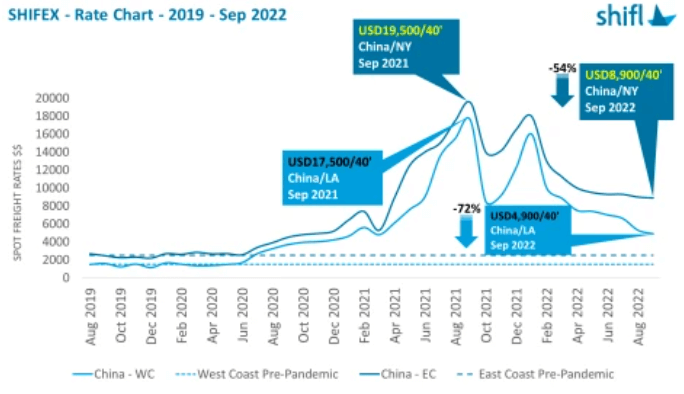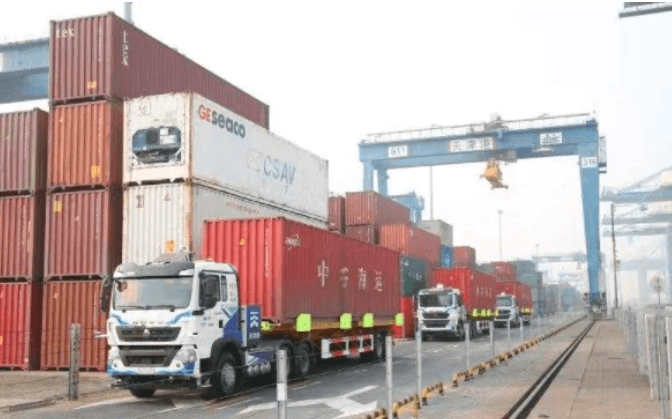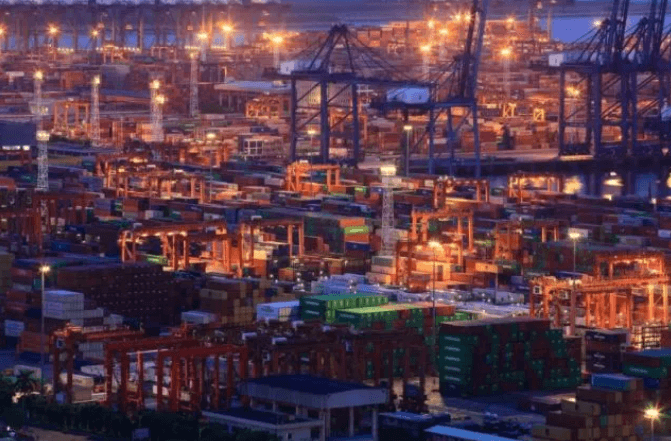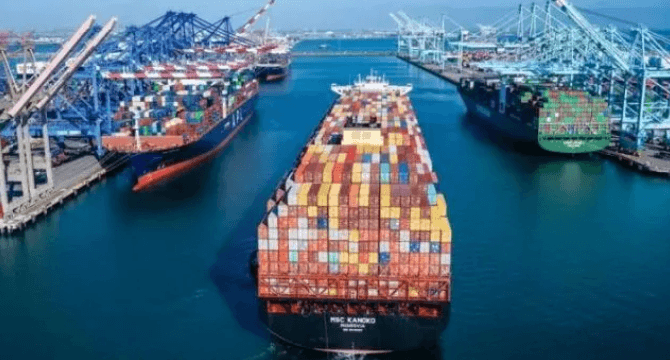Shipping routes has fallen sharply, once back to two years ago!
The saying “golden nine and silver ten” used to apply to the global shipping industry, but in this year’s traditional peak season, the shipping market has suffered from cold snaps. The freight rates of major shipping routes have plummeted in a “cliff-like” manner. Last year’s soaring shipping market was completely “cool”. Now the shipping market has changed from a “seller’s market” to a “buyer’s market”.

According to data from the Baltic Shipping Exchange, in January this year, the price of a 40-foot container on the China-US West Coast route was about $10,000, and in August the price was about $4,000, a 60% drop from last year’s peak of $20,000. The average price fell by more than 80%.
Even in the recent generation circle, the price of 2,850 US dollars for the receipt of goods from Yantian to Long Beach Port has fallen below 3,000 US dollars!
The entry threshold for the Asian near-ocean line is low, and the fluctuation is more obvious. According to the data of the Southeast Asia Container Freight Index (SEAFI) of the Shanghai Shipping Exchange, the Shanghai-Vietnam Ho Chi Minh Line and the Shanghai-Thailand Laem Chabang Line were quoted per TEU on September 9. Prices fell to $100 and $105, respectively. The current freight rate level is even lower than the cost, unprofitable! The third quarter of each year is the traditional peak season for shipping, but against the backdrop of global inflation, economic expectations are weakening and demand is lower, and the shipping industry is not prosperous this year.
As important participants in the shipping market, truck drivers have a deep perception of the market. In the past years, before the “double festival” of the Mid-Autumn Festival and the National Day, as the shippers seized the time to ship goods, the situation of long queues to enter the port frequently appeared, but the situation has changed this year.
Many truck drivers reported that the market situation was indeed a bit low, and many drivers admitted that “this year’s market is the weakest.” Industry insiders predict that high overseas inflation will squeeze demand and the downward pressure on the economy will continue to intensify. Compared with the shipping price of tens of thousands of US dollars last year, the global container shipping market in the fourth quarter is still not optimistic. fell further.

What caused the plummeting sea freight prices?
Kang Shuchun, chief executive of China International Shipping Network, told the Global Times reporter that the imbalance between supply and demand has led to a plunge in ocean freight rates. During the epidemic, due to the breakage of the supply chain, the supply of certain materials in some countries was cut off, and there was a “stocking tide” in many countries, which also led to the occurrence of abnormally high shipping costs last year. This year, due to the high inflationary pressure in the global economy, demand has declined. At the same time, the previously hoarded inventory cannot be digested by the market, which has caused European and American importers to reduce or even cancel commodity orders, and the “order shortage” has spread around the world. In August, Walmart said it canceled billions of dollars in orders; shortly thereafter, another retailer, Target, said it had canceled more than $1.5 billion in orders. Kang Shuchun said that, as the front-end part of the logistics system, these retailers are the most sensitive to market trends, and their large-scale cancellation of orders means that the purchasing power and consumption power of European and American countries are shrinking.

A recent survey conducted by the China Council for the Promotion of International Trade on more than 500 enterprises showed that the main difficulties faced by enterprises are slow logistics, high costs, and few orders. 56% of companies said that raw material prices and logistics costs are high. For example, although the freight rate of ocean shipping routes has fallen in the short term, it is still at a high level in the medium and long term. 62.5% of the companies indicated that orders were unstable, with more short orders and small orders, and fewer long orders and large orders.
In addition, the large number of new ships launched by the shipping giants has exacerbated the gap between supply and demand. Kang Shuchun said that the extremely high freight costs last year made many shipping companies a lot of money, and some large shipping companies invested their profits in new ships. Before the epidemic, the global shipping capacity was already higher than the shipping volume. The Wall Street Journal quoted energy and shipping consultancy Braemar as saying that a slew of new ships will be launched over the next two years, with net fleet growth expected to exceed 9% next year and 2024, while year-on-year growth in containerized freight volumes is slated for 2023. It will turn negative in 2018, which will further exacerbate the imbalance between global capacity and traffic.

Due to the many uncertainties in the international political and economic situation, shipping rates are likely to fall further in the rest of this year and into next year. Kang Shuchun told the Global Times reporter that although sea freight rates have plummeted, they are still slightly higher than before the epidemic. Considering factors such as high global inflation, soaring oil prices, and rising prices, the current freight rates are within a reasonable range. . However, judging from the current global economic situation, the downward trend of sea freight is certain, but it is difficult to conclude to what extent and when the limit will fall.
The abnormally high ocean freight rate last year was abnormal, and this year’s rapid plunge is even more abnormal. It should be the overreaction of shipping companies to market changes. This year, many liner companies have launched new container ships, and the turnover capacity is very abundant, but the global shipping booking demand is shrinking. To maintain cargo loading rates on liners, shipping companies try to leverage freight rates to leverage demand. However, the essence of the sluggish market transportation demand is the shrinking of trade demand. The price reduction strategy will not bring any new demand but will lead to vicious competition and disrupt the order of the shipping market.
The moderate decline in international shipping costs is reasonable, but the continued slump is not conducive to the normal development of the entire market. At the beginning of the year, many shippers signed a long-term agreement price with shipping logistics companies to avoid the situation that it is difficult to find a box again, but now the market spot freight is much lower than the signed price. If domestic shipping logistics companies blindly follow price cuts, it will not only damage the interests of cargo owners, but also be unfavorable for long-term cooperation, and price cuts will not bring about an increase in transportation demand. new business.
For domestic exporters, the more important thing is the international competitiveness and sales of goods. The European and American economies are in recession and inflation is intensifying. At the same time, the over-ordered goods last year will still be digested for some time, and the decline in purchasing power will continue for some time.









